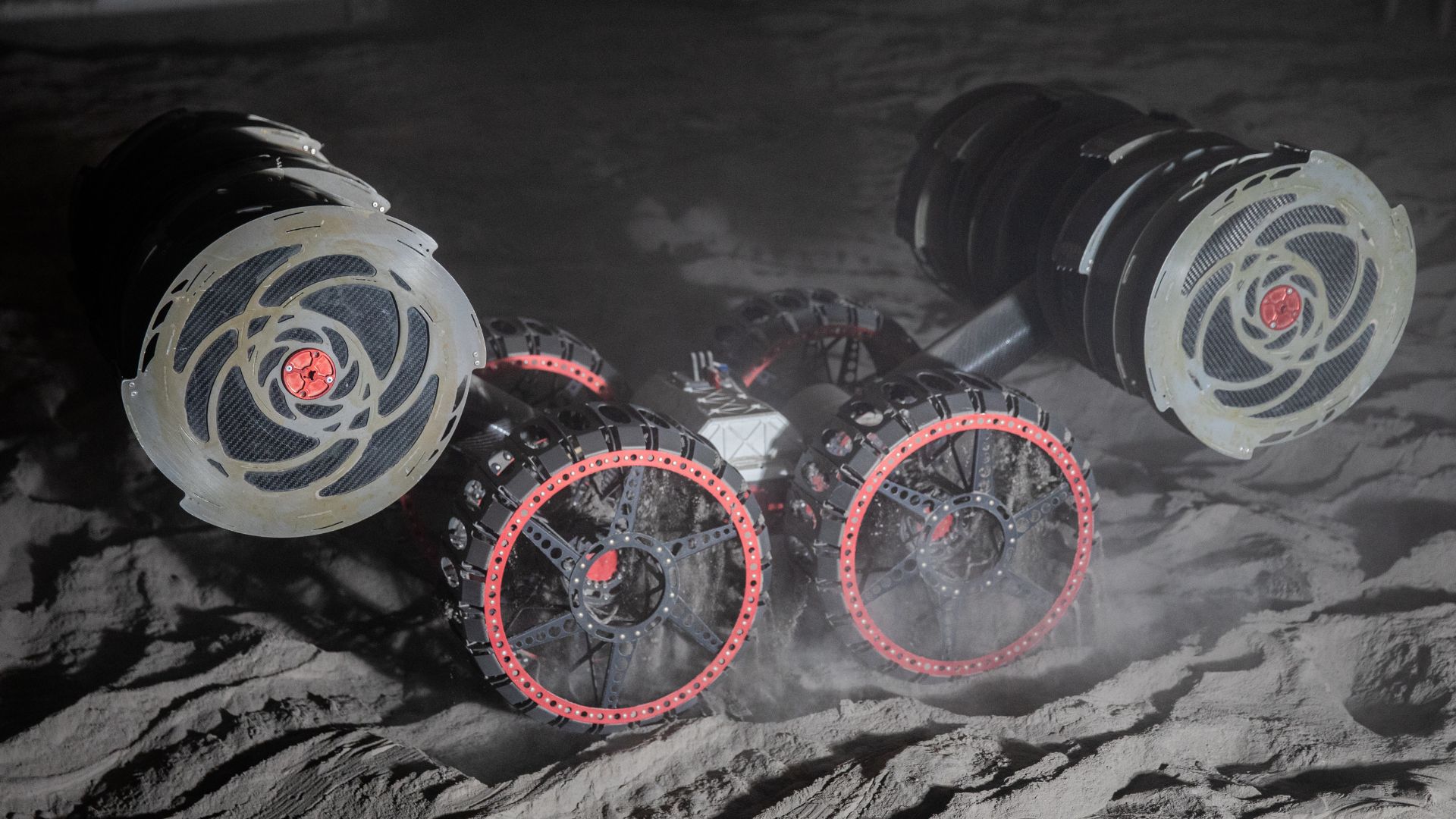
NASA’s ISRU Pilot Excavator will excavate and transport lunar regolith. NASAKennedy
NASA has unveiled how its moon mining robot or In-Situ Resource Utilization Pilot Excavator (IPEx) will work on the lunar surface.
This robotic system will support lunar digging, making it possible for humans to extract vital resources.
IPEx is a dual-purpose machine, acting as both a bulldozer and a dump truck.
Its key task would be to mine efficiently and transport lunar regolith – the loose rocky material covering the Moon’s surface. This regolith holds the potential to extract essential resources like hydrogen, oxygen, and even water.
“The IPEx project is a testament to NASA’s commitment to leveraging cutting-edge technology to achieve its goals for lunar exploration. By reducing reliance on Earth-supplied resources, IPEx is a critical component of NASA’s strategy to establish a sustainable human presence on the Moon and beyond,” said Jason Schuler, IPEx Project Manager and Principal Investigator at Kennedy Space Center.
Bucket drums for collection
IPEx employs a novel design of rotating, hollow cylinders with scoops, called bucket drums.
The bucket drums will be used to dig and collect regolith. The counter-rotating drums reduce force feedback, enabling this lightweight system to work efficiently in the Moon’s weak gravity.

ISRU Pilot Excavator.
Interestingly, this robotic system holds the potential to dig up to 10,000 kg in a single lunar day. That’s equivalent to the weight of 20 adult elephants. This is a huge increase from previous missions that only collected tens of kilograms.
The system’s ability to excavate large quantities of regolith is crucial for future In-Situ Resource Utilization (ISRU) operations. Oxygen extracted directly from the lunar regolith could be used for life support, fuel, and other necessities for long-term human presence on the Moon.
“The innovative design of counter-rotating bucket drums, which dig simultaneously in opposing directions, enables IPEx to maintain a low mass while efficiently addressing the challenges of reduced gravity excavation,” said Eugene Schwanbeck, IPEx Program Element Manager.
Moreover, this mining robot will be equipped with modern technology to improve its performance.
NASA has revealed some of its key subsystems in the mission description. These include a Camera and Dust Mitigation System for navigation and clear vision, a Mobility System for movement across the lunar surface using wheels, a Thermal Control System to maintain safe operating temperatures, and a Regolith Delivery System with rotating bucket drums and arms to collect and transport lunar soil.
IPEx will also use advanced algorithms to improve its performance and dependability.
IPEx – Modular design
Last year in March, NASA tested the autonomy of this robotic system to navigate the Moon‘s harsh environment.
For this, the team tested autonomous driving methods in a simulated lunar rock yard that replicated the difficult lighting and terrain conditions.
Lunar mining robots like IPEx will dig up regolith and transport it to a processing plant where valuable resources will be extracted for life support.
IPEx is designed to be adaptable and easily modified for different lunar missions. This is achieved through a modular design, specifically, its actuators.
NASA says that this modular approach “reduces complexity and cost while ensuring that the system can operate effectively both on Earth for testing and on the lunar surface.”
If all goes out as planned, this robotic system could help establish a permanent human presence, not only on the Moon but potentially on Mars as well.
RECOMMENDED ARTICLES
0COMMENT
NEWSLETTER
The Blueprint Daily
Stay up-to-date on engineering, tech, space, and science news with The Blueprint.
By clicking sign up, you confirm that you accept this site's Terms of Use and Privacy Policy
Newsletter Icon
ABOUT THE EDITOR
Mrigakshi Dixit Mrigakshi is a science journalist who enjoys writing about space exploration, biology, and technological innovations. Her work has been featured in well-known publications including Nature India, Supercluster, The Weather Channel and Astronomy magazine. If you have pitches in mind, please do not hesitate to email her.